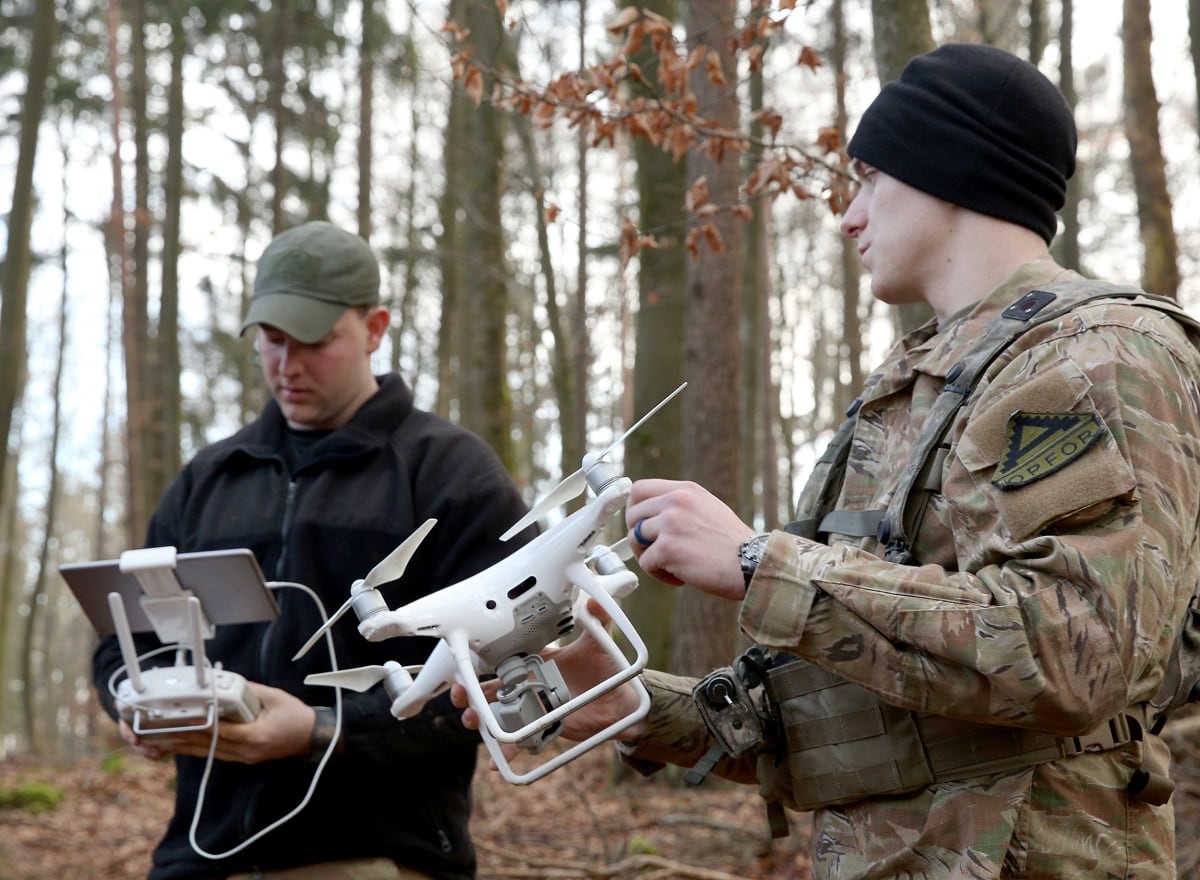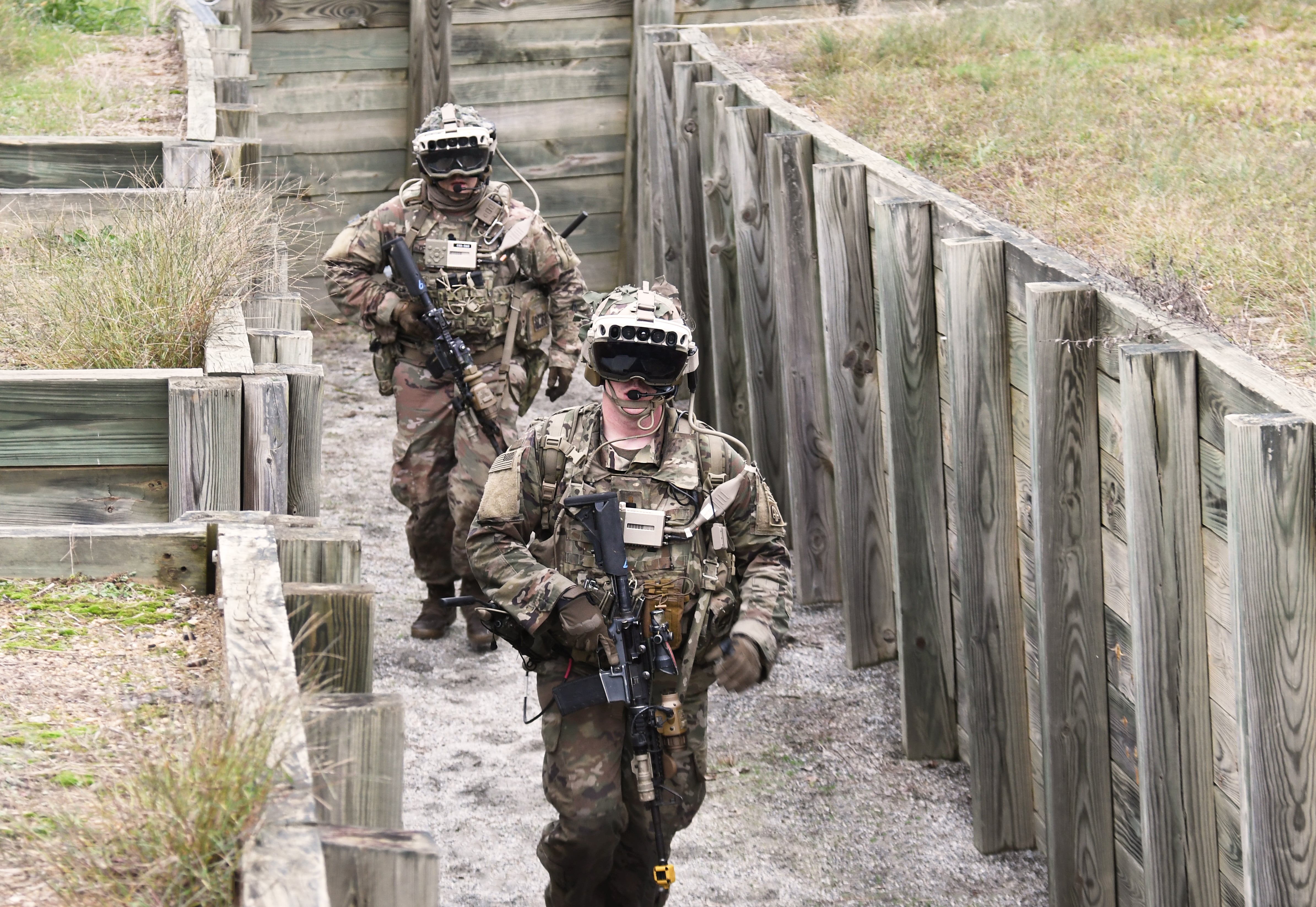A scene from the 2012 science fiction film “Prometheus” depicting the use of handheld drones to map a subterranean tunnel network might be closer to reality than you think.
Using commercial drones and Lidar scanners, an Army Training and Doctrine Command team wants to not just map, but also model bridges, buildings and other terrain features down to the barbed wire scattered about. Those models could then be fed back to infantry soldiers wearing augmented reality goggles or to artillery batteries preparing fire missions.
“Right now, we can do 3D mapping, but that doesn’t tell us a whole lot,” said 1st Lt. Michelle Kokoski, a geospatial developer on the team. “So we’ve been tasked with coming up with a requirement to do 3D modeling. … That offers a lot of metrics that a 3D map does not.”
A 3D map gives soldiers an understanding of the size and depth of objects. But a 3D model can give soldiers the perspective of walking down the street around those same objects, similar to Street View in Google Maps.
The geospatial team tested the technique Oct. 6 and Nov. 4 on a trestle bridge near Fort Leonard Wood, Missouri, they explained during a recent interview with Army Times. The bridge was composed of closely spaced frames that made modeling it far more difficult than simple 3D features, such as buildings.
“The Lidar just gives you points. It’s a whole bunch of dots from laser pulses. And then that photo capture also allows you to put an image skin on top of that laser capture to give it the realistic effect,” said Col. Kenneth Frey, director of TRADOC’s geospatial proponent office.
Using the same technology on a village could create simulations that can be displayed on an IVAS headset.
“That squad or element that’s going to go work in this village can do a full 3D visualization just like any kind of first-person shooter game to see where the lines of sight are, where the obstacles are,” Frey said. “It might not be Call of Duty-level graphics and visualization. But it’s going to be darn good.”

These 3D models could also help artillery and aircraft refine targets, putting rounds on specific points without hitting vertical objects nearby.
“Lidar is so accurate that it enables targeting,” Frey added. “Every single pixel, every single laser pulse that hits that structure is accurate enough to target on.”
If an object like that trestle bridge needs to be demolished, 3D modeling allows demolition experts to determine their requirements for doing so without sending a reconnaissance element in to physically measure it.
The modeling technique is something that the geospatial team said could have saved lives in the past, pointing to the massive terrain challenges soldiers famously encountered when establishing and manning Combat Outpost Keating in Nurestan province, Afghanistan.
Army leaders used topographic maps to decide where to place COP Keating, but many aspects of the terrain were poorly understood, according to Chief Warrant Officer 4 Michael Baber, another member of the geospatial team.

“They didn’t know some of the approaches that were unseen to their eye, which could have been mapped via 3D sensor, like the guys that were sneaking up to the COP from streams,” said Baber. “Had this technology been utilized in the past, imagine the lives that we could have saved.”
The 3D models can have a resolution of up to two centimeters, noted Sgt. 1st Class Andrew French, another soldier on the geospatial team. That resolution can tell soldiers what their line of sight will actually look like when they get to a certain point.
“So COP Keating is an excellent example,” French added. “This data would give you a perspective that is so accurate, that we would know exact locations of the enemy or where to set up a COP.”
The data gathered on the trestle bridge, which was composed of millions of points, was accurate enough to pick up fence lines, barbed wire and even members of the team, French said.
All that data does present challenges that could require more investments from the Army, however.
Just the Lidar shot on the trestle bridge was composed of six gigabytes. One gigabyte is equal to approximately 1000 megabytes. An email, for comparison, can handle roughly 15 megabytes.
This coming March, Frey and his colleagues will present their work on 3D data integration to higher ups who will assess the processing power, hardware, software, and licensing requirements necessary to develop 3D modeling further in the Army.
“There’ll be a senior-level decision on what to do, is the bang worth the buck,” Frey added. “Personally, I think it’s an inevitability. … You can see it in the commercial environment all over the place. Just go on Google Earth and see things like this. So it’s going to happen. It’s a matter of doing it responsibly and in a fiscally constrained environment without trying to revamp the Army.”
Kyle Rempfer was an editor and reporter who has covered combat operations, criminal cases, foreign military assistance and training accidents. Before entering journalism, Kyle served in U.S. Air Force Special Tactics and deployed in 2014 to Paktika Province, Afghanistan, and Baghdad, Iraq.




